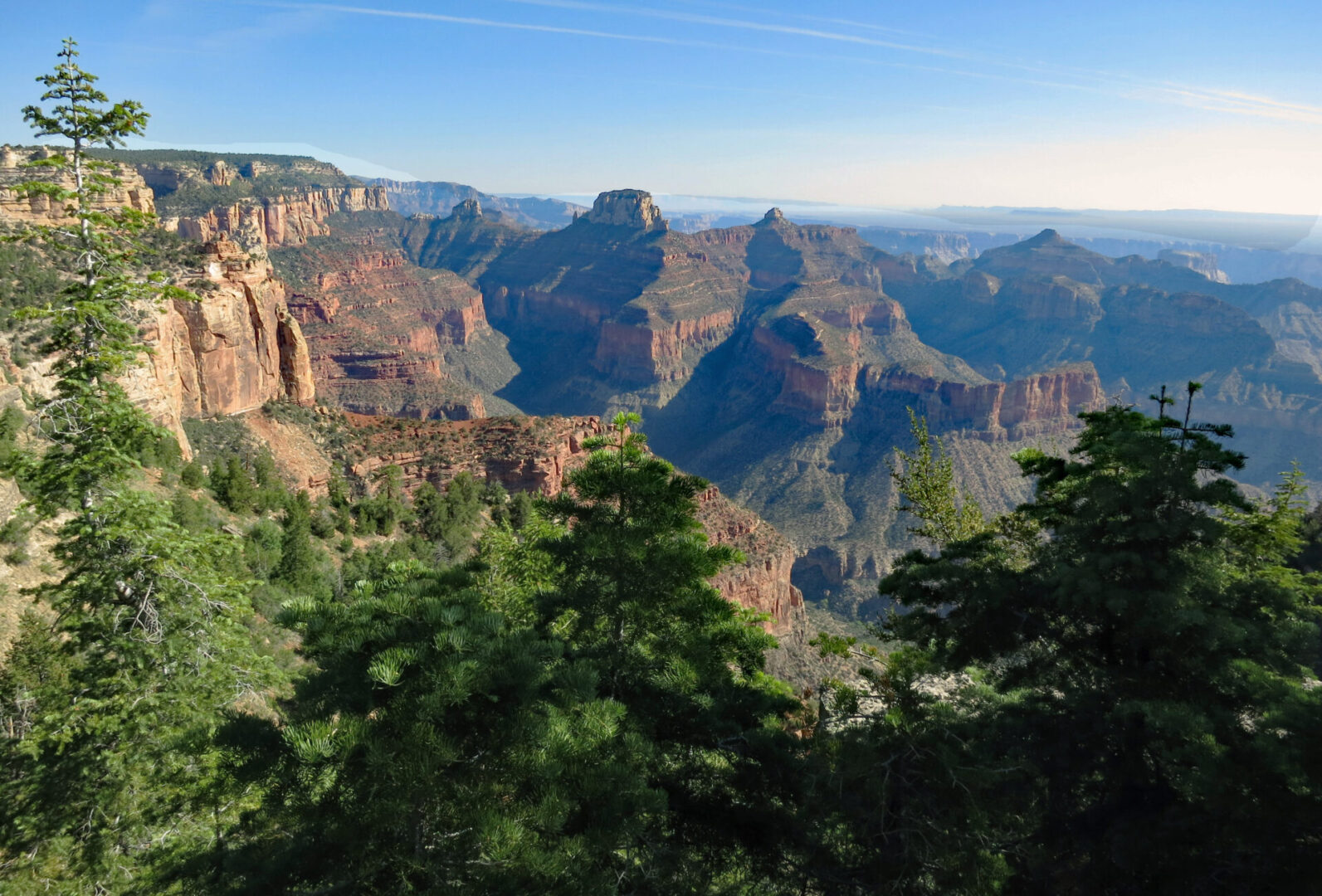
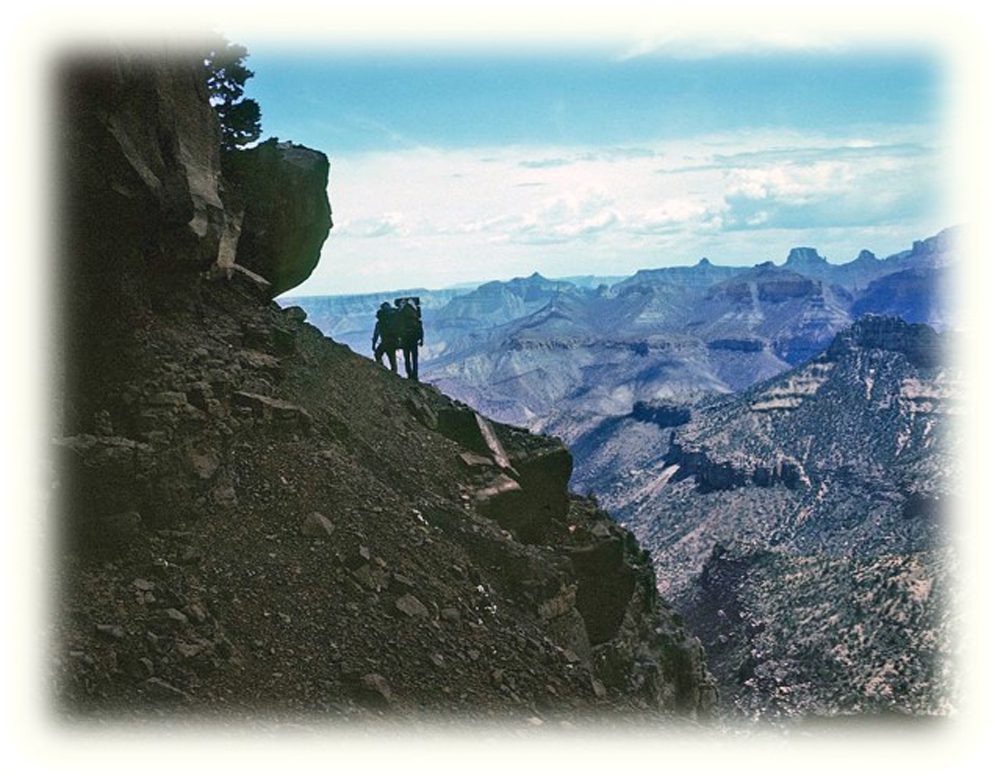
A Geologist Confronts the Natural History of the Grand Canyon and What It All Means
The grand themes of geology are expressed in the Grand Canyon with clarity and magnificence like nowhere else. Here is a free book presented in chapter by chapter modules in which these themes are expressed in the similitude of a pilgrimage after 32 raft trips and over 70 field trips leading classes, public outreach programs, friends, and fellow researchers during my 35 years of teaching geology at Arizona State University.
Rather than an authoritative or scholarly offering, this is my personal view based on what I know and have experienced. It is a book living on the Internet that is subject to expansion, revision, and addition of videos and new images. Additional commentaries will be slowly added in the blog section as appropriate. The book is aimed at a wide audience from readers with little knowledge of science to those with different philosophies, interpretations, and prejudices regarding the scientific endeavor.
This report was not written for money, fame, or academic advancement. It just erupted from the teacher and lover of nature in me. It is presented here as science interwoven with a travel story and personal feelings about what it all means. Written from the heart, may it educate, challenge, provoke, and aid in the search for a deeper meaning of the Grand Canyon’s incredible splendors.
The Prism Through Which I View The Grand Canyon
I have a BA from the University of Chicago and a PhD in Geochemistry and Geology from Caltech. After 7 years of professoring at Louisiana State University, I moved to Arizona State University where I built a large stable isotope laboratory that was active until my retirement in 2015. I worked with my graduate students, staff, and colleagues mostly to use the isotopic composition of certain kinds of sedimentary rocks to infer the approximate climatic temperature history of the Earth over geologic time. Along the way, we also researched various problems in hydrology relevant to the origin of brines in oil fields, where to put the nation’s nuclear waste, the origin of cherts and concretions in the oil-rich Monterey Formation of California, and local environmental issues. We initiated the use of isotope geochemistry to determine when life first occupied land surfaces. Before retiring, I published in the new field of astrobiology regarding the salinity history of the oceans and the origin of the layered rocks on Mars. Teaching involved university courses at all levels, including Introductory and Historical Geology, Introductory Astronomy, Mineralogy, Sedimentology, Isotope Geochemistry, Astrobiology, Advanced Field Geology, Applied Hydrology, Advanced Sedimentology, Geology of the Grand Canyon, and 16 years as co-founder and director of the five-week ASU Geology Summer Field School. I also mentored many graduate students and led geology field trips for the public every year since 1989.
Following retirement, I plunged into my lifelong hobby of observing the universe with the largest telescopes one person can transport to dark sky sites. An overwhelming emotional experience using one of these to explore the core of our Milky Way galaxy provoked this science pilgrimage through the Grand Canyon, across the Mojave Desert, up the axis of Death Valley, and onto the crest of the Sierra Nevada mountains in Yosemite National Park. These were my old haunts as research locations, field trips for my classes, and many public outreach field trips. The pilgrimage confronts and ponders the grand themes of natural science as exposed there as in few other places. What does it all mean? Herein lies a tale. It begins with that night exploring the core of our Milky Way galaxy.


Preface
Chapter one deals with what prompted the pilgrimage and the manner of its setting out.
Chapters 2-4 explain what a pilgrim can experience from Grand Canyon vistas on the South Rim and the drive to where raft trips through the canyon begin.
Chapters 5–22 chronicle a raft trip aimed at considering the grand themes at various stops along the river. The adventures are true, but several from past trips have been intermixed in order to form a smoother narrative. Explanations of the geology are derived from short talks I gave at stops of special significance on my 32 charter raft trips with Hatch River Expeditions. A reader only minimally interested in science can skim along to the next adventure or topic of possible interest--or just look at the pictures! These chapters include geology which can actually be seen and confronted. They also serve as a guide for those considering or planning a raft trip who want some geologic background or those wanting to know what a raft trip through the Grand Canyon can be like.
Chapter 23 is an epilogue and consideration of the ongoing pilgrimage, which next enters the Mojave Desert. Books living on the Internet regarding the journey through Death Valley and the High Sierras are still in preparation.
Click on the module title to bring up the chapter PDF. Unless otherwise noted, all photographs and diagrams are by the author. Teachers are welcome to download and use them in classroom presentations without permission or acknowledgement. Please do so! Any commercial use requires the author's permission.
Adventures and Epiphanies in the Grand Canyon (Click on Chapter Titles)

Incorporating what science tells us about objects in the universe as viewed with a large telescope at a dark sky site in Arizona yields a mind-boggling experience and a longing to repeat it on a journey through landscapes showing the grand themes of geology and the history of life as displayed with clarity, meaning, and magnificence like nowhere else. While driving home, visions take shape of a pilgrimage in this golden age of science on a trip through the Grand Canyon, across the Mojave Desert, up the axis of Death Valley, and onto the crest of the Sierra Nevada Mountains.

Looking down into the Grand Canyon at sunset with a new purpose, the pilgrim ponders the energy necessary to uplift the region and then dig out this erosional gorge. The slow decay of radioactive elements created in ancient supernova explosions and incorporated into the Earth when it formed power the uplift, while energy from nuclear reactions in the sun powers erosion that tears it down. Star Wars! The Noah’s flood explanation offered in a chance encounter with a Creationist at this isolated spot provokes consideration of whether science is indeed the right path for this pilgrimage. For me, it is.

The entire geologic story is pondered in the morning light from the Desert View Vista Point using an illustration on bandannas sold there. The underappreciated rock rubble immediately underfoot is of surprising interest because it formed 250 million years ago during the time of the greatest mass extinction event in Earth's history. Several other of geology’s grandest themes are on display here. The pilgrim considers them in terms of what they mean. He realizes for the first time how ancient life surprisingly accounts for so much of the scene.

The drive from Desert View to Lees Ferry where all raft trips begin is a thing of wonder. The pilgrim incorporates a scientific understanding of the scenes encountered on the drive, and marvels at the richness of the story. Disturbing reminders of the human condition and of one of the grand themes are encountered and transcended prior to the upcoming morning launch of the raft trip.
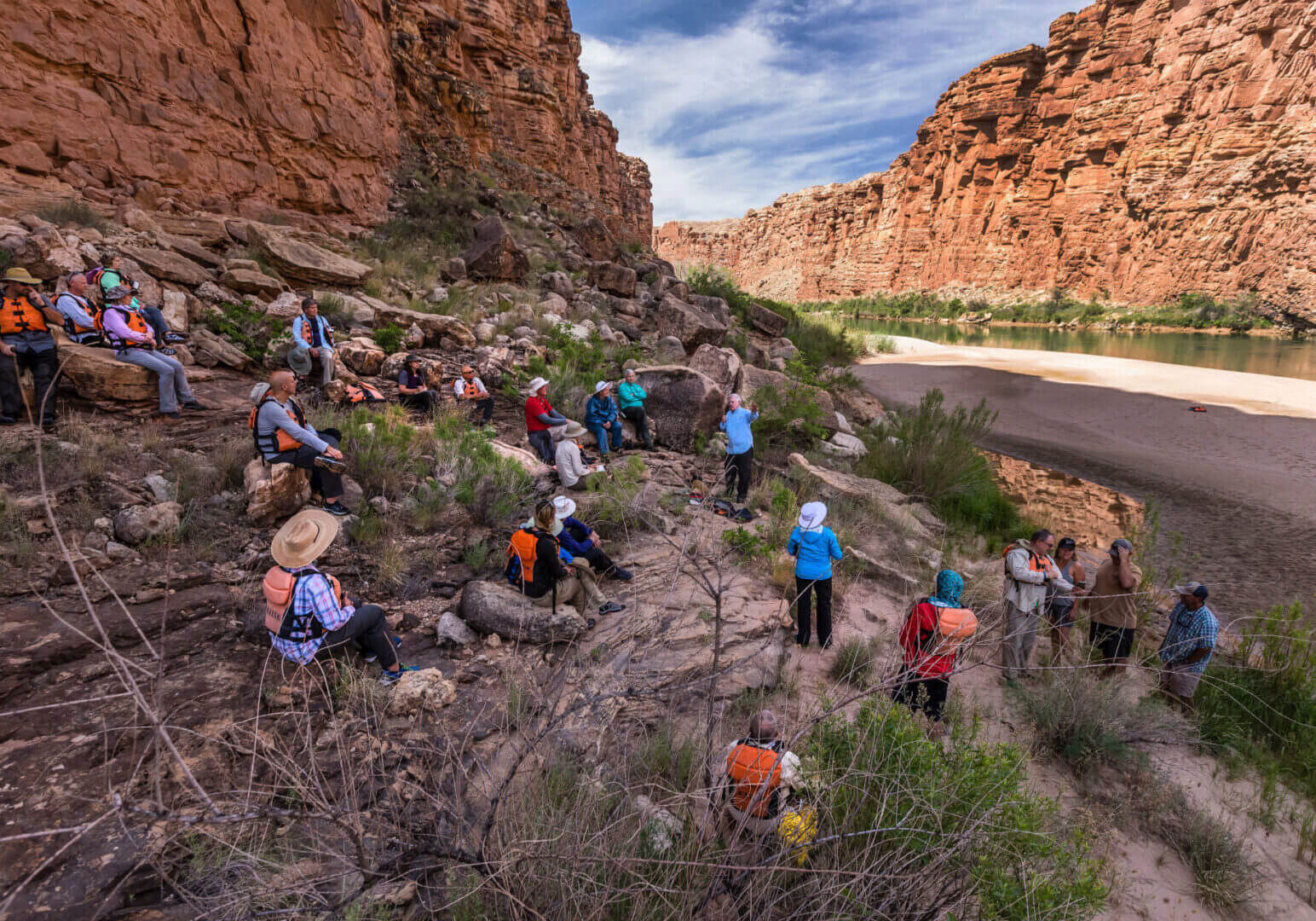
The raft trip launches and begins descending into deep time amidst the great stack of 250-550 million year old sedimentary layers. Every layer tells a story of past sea level changes, different climates, and different depositional environments. Several stops and hikes allow remarkable reveries of a vast region of shallow waters with thriving reefs and numerous islands under a hot equatorial sun and then a sea level rise that flooded great sand dunes –including the tracks of long vanished creatures as they scurried about. The sound of an upcoming rapid brings the physical dangers of the journey ahead into focus.
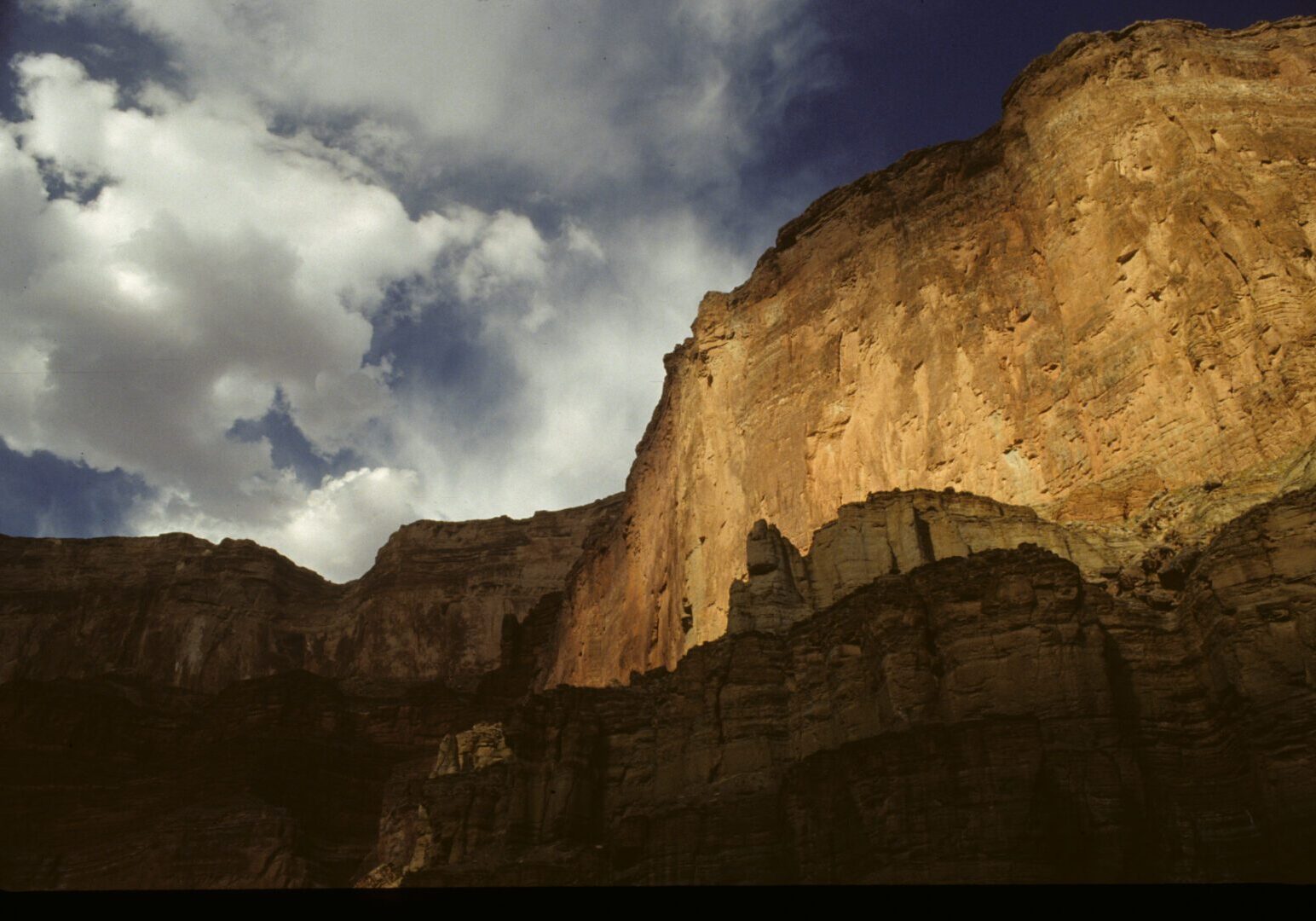
A hike up Ryder side canyon reveals ledges of sandstone interbedded with thin shale beds that have mostly washed out to leave deep indentations in the walls. These scenic but seemingly uninteresting sandstone shale cycles come to life when recognized as having formed because of sea level rises and falls associated with a great ice age about 300 million years ago. Eyes informed by science transform the walls into a mesmerizing story that will surround our upcoming campsite for the first night.

The canyon walls begin to look like stacked blocks because of highly geometric fractures that resulted from regional uplift. The fractures produce the scenery and control erosional sculpting here and throughout the Grand Canyon. A hike up North Canyon side canyon during the sunset pageant stops in a paradise of curved fractures where time seems to become space.

The cathedral-like scenery results from tension fractures that develop during tectonic uplift of vast regions on a spherical Earth. Blocks fall into the river to make piles down both banks that are eventually washed away. An argument that the stupendously loud sound of a rockfall that the pilgrim once experienced here is energy released from ancient supernova explosions that created radioactive elements that power mountain building processes. Considering the large amount of fallen debris, the Grand Canyon over time may be the loudest place on Earth.

The Redwall Limestone rises out of the river as we travel along until we are between narrow walls that go up over 500 feet. We climb onto a ledge exposing fabulous fossils and then go downstream into one of the many caves exposed on the walls. We pass a waterfall draining the aquifer under the North Rim, and then pull into an enormous opening to discuss the nature of limestone aquifers and how deposition of limestones is continually interrupted by periods of emergence.

A shady alcove hosting redbud trees reveals a strange feature exposed at a mysterious 200-million-year gap in time during deposition. Various interpretations are permitted via the awesome concept of deep time. We set up camp downstream amidst layers deposited during the earliest history of animal life and then experience a windstorm for the ages.

A long hike pauses at a cliff exposure of black oceanic shales deposited during the interval of the greatest diversity of animal body plans in evolutionary history. The group departs for a climb up to Native American ruins leaving the pilgrim by himself to visualize what science says was once going on here. Deeply shaken by realizing the relentless predation, cumulative agony, and insufferable pain in animals on the evolutionary path to human consciousness, the distressed pilgrim questions if this is the only way that consciousness can evolve in the universe.

The contact between the oldest layers holding animal fossils and that below slowly rises along the river and is found to be caked with white salt from enigmatic brines weeping out into the sunshine. The remarkable history of salt in the Earth’s Ocean and how it may have affected the origin of animals is confronted here in a unique way. The flat layers have given way to black and maroon-colored, slanting beds. We are suddenly immersed in much older worlds.

The first part of a long loop hike up a side canyon passes bewildering fossils of early life and other bizarre features. The heretofore horizontal layers are then found wrenched in a right angle up toward the sky. Altogether new themes of geology are required to explain this and all the scenery ahead.

The global theory of plate tectonics is brought in to possibly explain the dramatic folds and faults we are walking through. The pilgrim shares concerns about how the theory can be misused and with how it is now taught everywhere. All around and ahead of us are complexities that can be felt better than understood.

The widest stretch of the river is encountered as it makes an almost right angle turn to go through the heart of the Grand Canyon. The ancient rocks are now mysterious tilted layers of a new type that were intermittently covered with prominent black lava flows and then sliced by faults. A raging sandstorm descends on the evening camp followed next morning by examination of a cliff face showing 1.1-billion-year-old quicksand.

Rapids within the inner gorge are traversed amidst walls of highly deformed seafloor mud that was forged into hard, shiny, black schist when it was deeply buried, folded, faulted, and pressure-cooked about 1.7 billion years ago. Epic adventures in the rapids finally end at a campsite with the best river view of the geologic history of the Grand Canyon.

The walls of the Canyon are now draped with curtains of ragged gray travertine that help create unique side canyons. One of exceptional beauty becomes a classroom to reflect on deep time and how the ages of rocks are determined. The complex issue of how granites and continents form is confronted.

A magical side canyon holding the most wonderful exposure of the contact between the layered Paleozoic rocks lying on the underlying ancient, tortured rocks is explored and explained. The Pilgrim speculates how this same relationship first identified in Scotland in 1788 combined with Darwin’s theory of evolution and the first reliable measurements of distances to the stars upended the western psyche and created universal angst never since resolved.

The most bizarre stretch along the river is now encountered including a mass of bedrock dividing the river, boulders that unequivocally went uphill, the only waterfall falling directly into the river, and the narrowest channel. All is explained by one event easily deduced by one specific upriver view from our evening campsite.

The canyon turns into walls of carbonate rising 4,000 feet straight up from the river-- possibly the thickest visible accumulation of this sort in the world. The implications for past and future climates are explored. The pilgrim hikes in twilight up a side canyon from camp and recognizes how significant we are in the scheme of things even though the evidence of our insignificance is all around and overwhelming.

Strange red columns capped with huge boulders appear high up the walls and bring memories of a perilous climb to partially resolve their secrets. Next the walls become caked with black lava flows frozen in place as they poured over the walls and into the canyon one million years ago. The fastest flowing white water in North America is encountered and traversed. We arrive ecstatically at the last camp, but this will be the most frightening night of the pilgrim’s life.

Camped in isolation on a ledge at the base of a crumbly vertical wall, the pilgrim is tormented by the linear regional alignment of the lava rocks we just passed through with others up to 450 miles away--including aligned rows of sink holes and the corners of the only known rectangular meteorite impact crater in the solar system! A severe rainstorm erupts around midnight and panics the pilgrim because the crumbly wall starts shedding and pelting pieces at an alarming rate. He skedaddles amidst rain and lightning back to camp to sleep in the fetal position under a leaky camp table. Scheduled helicopters pick up the group at sunrise, and the pilgrim departs with the crew to go on 90 miles to the mouth of the Grand Canyon.

The two boats exit the mouth of the Grand Canyon into the wide-open landscape of the “Basin and Range Province.” They land and are loaded onto a waiting flatbed truck. The pilgrim bids the crew adieu as he departs for the next leg of the journey west. Views from a high vista preview the upcoming region filled with volcanic and tectonic mayhem. The relatively simplicity of the layered rocks of the Grand Canyon is behind. The pilgrim ponders again the meaning of the grand themes already experienced and the new ones ahead as the journey continues on into the dumbfounding vastness of the Mojave Desert and Death Valley.
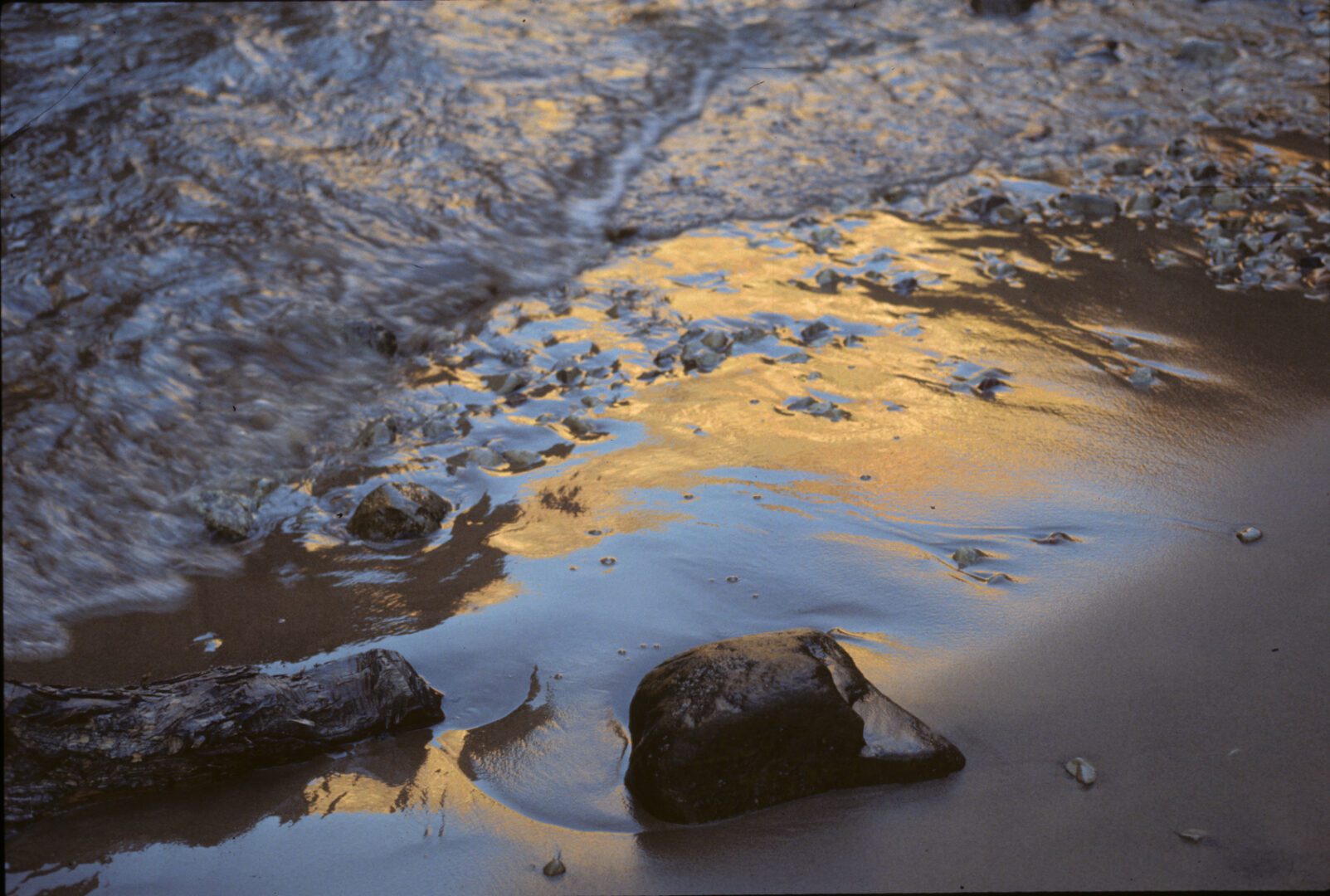
Images on Homepage Modules:
Prism: Martin Kennedy; Ch 1: GoDaddy Web Services; Ch 5: Michael Nolan; Ch 22: Rene Knauth; Vitae: Howard Bond.
Hatch River Expeditions: Many acknowledgements for the owners, staff, and crews coming soon!
Many Others: Coming Soon!

GrandThemesGrandCanyon@gmail.com.
Permissions, comments, corrections, suggestions, complaints, disagreements.
